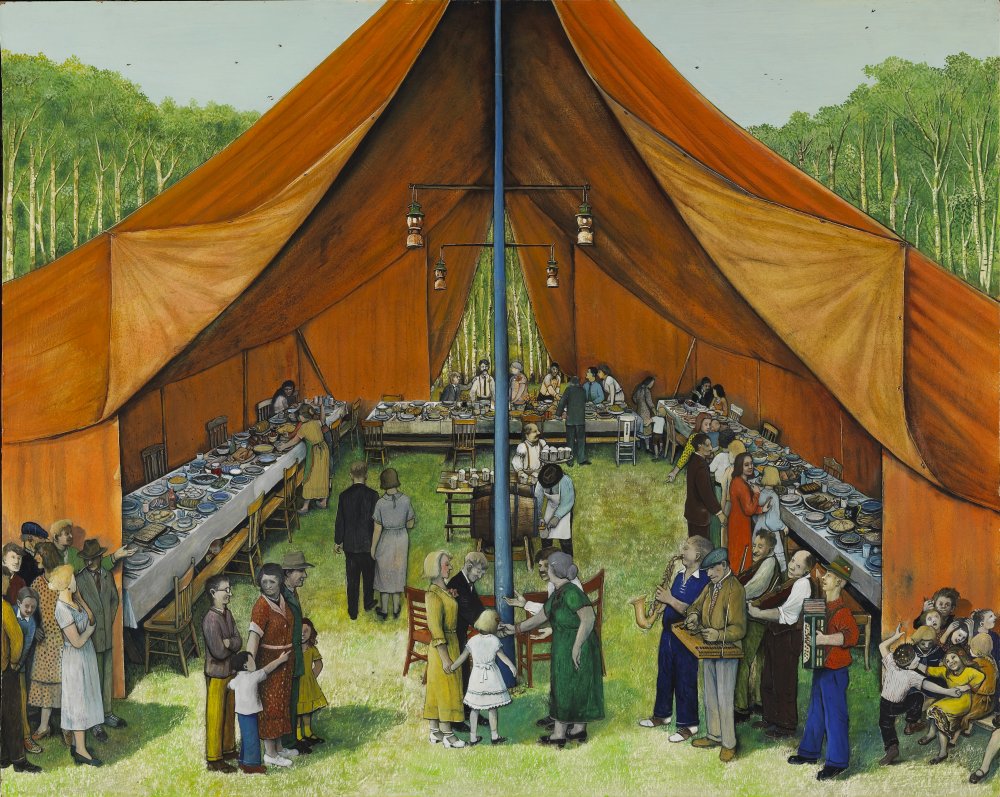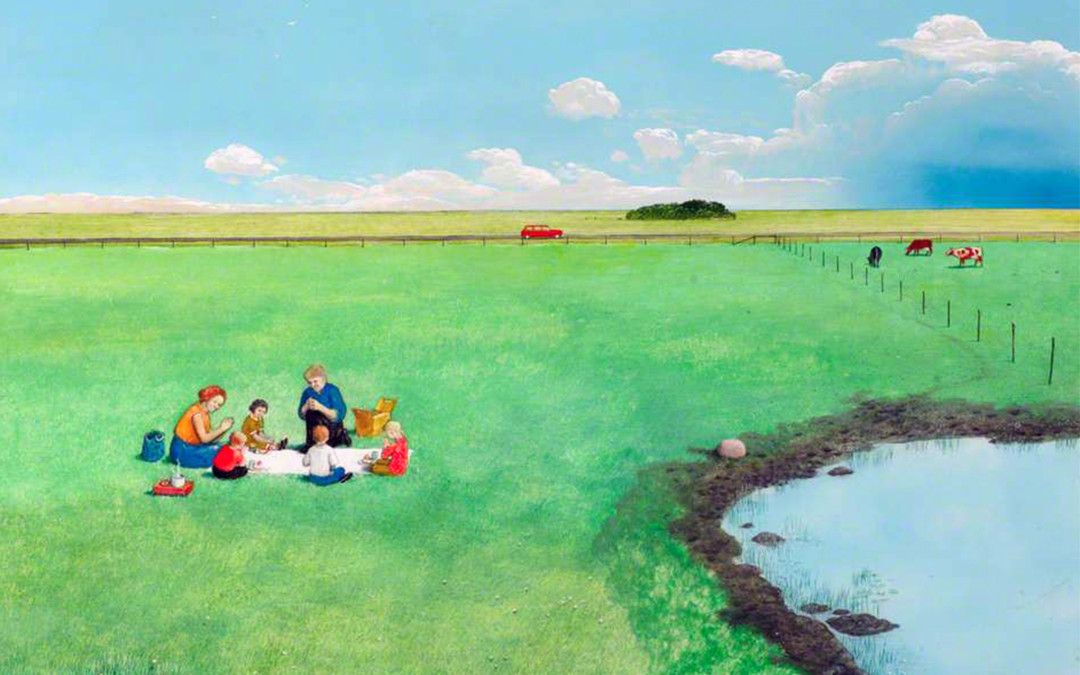William Kurelek said he carried “wretchedness like a heavy stone sewn up inside of me.” At times, the stone was lifted as in two picnic paintings Manitoba Party (1964) and Out of the Maze (1973), each testifying his recovery from schizophrenia and lost spiritual faith. Though painted almost two decades apart, when seen together, they show Kurelek working towards keeping his life (which seems always teetering) in balance.
Manitoba Party or Kermesse is a social gathering honoring Kurelek’s commitment to the local Ukrainian community in which he was born and raised. At the time, Kurelek was 39 years old and starting a family after a long period of despair. His kermesse is in the tradition of Dutch and Flemish paintings of this genre associated with Breughel and Rubens. But while their parties are charged with high energy, Kurelek’s kermesse is static except for the vibrant orange tent.
The big orange tent in The Manitoba Party sweeps the viewer’s gaze heavenward, perhaps suggesting his faith in God. Though its purpose is uncertain, the gathering indicates a sense of community, friendship, and fellowship.
The hosts are a woman in green and a man in white. Guests line up to meet and greet the hosts. Inside, the tent tables are laden with food, perhaps brought by each family, potluck style. There is a five-piece band, but no one is dancing, except the children, frolicking behind the band.
Painted almost a decade later, Out of the Maze is autobiographical and personal. The picnickers are Kurelek, his wife Jean Andrews, and their four young children. They sit on the grass in an immense green field near the shore of a calm blue lake under a mostly blue sky sprinkled with a few white clouds. The picnickers sit in a circle with hands clasped in prayer, alluding to Kurelek’s mental fragility and spiritual restoration in the Catholic Church.

Manitoba Party/Kermesse (1964). National Gallery of Canada/Musée des Beaux-arts du Canada, Ottawa.
While Manitoba Party shows strong faith and recovery, Out of the Maze insinuates that the painter’s surety and sanity are constantly threatening relapse. Reminders of death are glimpsed: a skull on the prairie grass (lower left), rocks in the lake, and a gathering storm (upper right). The distant storm, particularly, suggests Kurelek’s fear of an impending world apocalypse, a nagging worry, probably exacerbated by the ravages of liver cancer, from which he died in 1977 (at 50). In his final moments, he had a vision of Toronto in flames.
See William Kurelek. Someone with Me: The Autobiography of William Kurelek. Toronto: McClelland and Stewart, 1980; Patricia Morley. Kurelek: A Biography. Macmillan: Toronto, 1986
Featured Image: William Kurelek. Out of the Maze (1973). Oil, gouache, and graphite on board. Bethlem Royal Hospital Archives and Museum of the Mind. London

